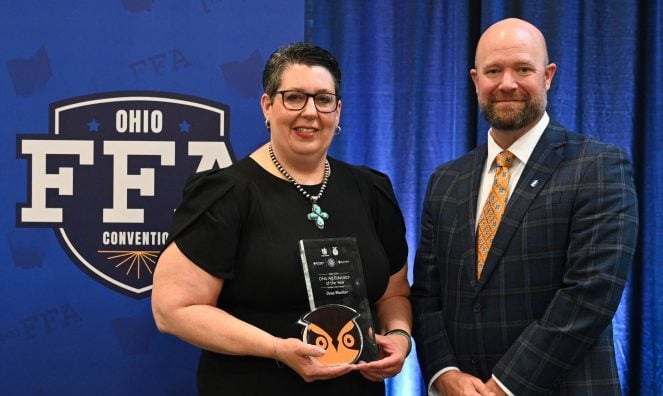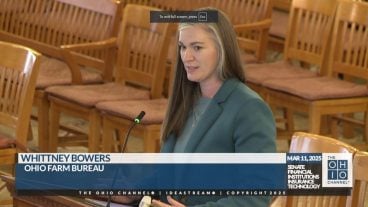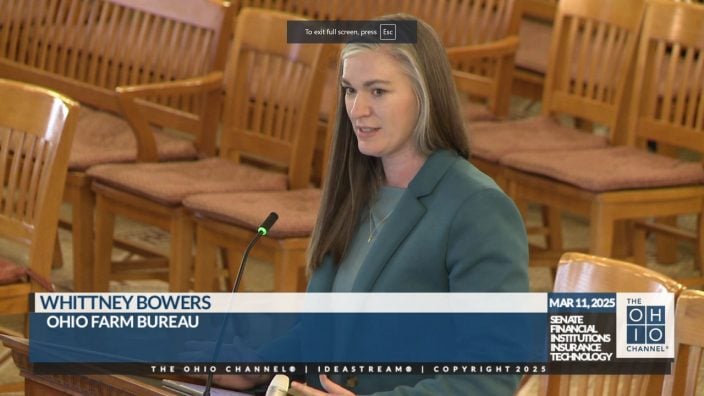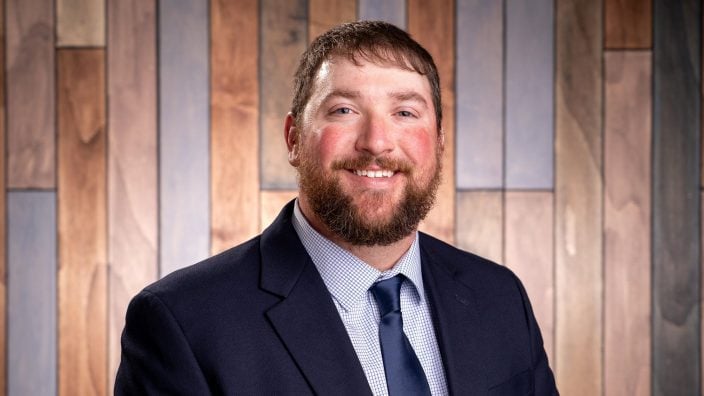Ohio Senate passes Farm Bureau Health Plans legislation
SB 100, championed by Sen. Susan Manchester, would offer farm families access to affordable, personalized health care plans.
Read More$14,666 a year is a lot of money to cover in the family budget. It’s more than the average household spends on food, transportation, health care, clothes or any other expenditure other than housing. It’s almost 20 percent more than the average household’s income tax. We’re all paying it and likely don’t even realize it.

$14,666 is the average household’s cost to comply with federal regulations. The costs are built into the price of literally every product or service you buy. The rules are spelled out in the Federal Register, which in 2016, had 95,894 pages added. That’s 369 new pages added every day. It’s a $1.9 trillion expense for the economy. Then, there’s the Ohio Revised Code, which is 36 volumes and more than 15 million words. The ORC includes 246,852 restrictions on individuals, communities, farms, businesses and organizations. I learned these stats from researchers at the Competitive Enterprise Institute and The Mercatus Center at George Mason University. They both explain how government dictates can slow or damage economic growth. My personal experience tells me the researchers are right.
In the early 2000s I worked as a senior official at the U.S. Environmental Protection Agency, where I served with dedicated professionals doing their best for the environment and Americans. One project required EPA to consult with the Department of the Interior. It took creating a new federal regulation and two years of work to simply allow the two agencies to talk.
Here at Farm Bureau, much of our time is spent keeping up with government rules that affect the organization. I have a five-inch thick binder of rules covering financial management, compensation, taxes, branding, benefits, services, insurance coverages, ethics and general business practices. Just our advocacy work requires more than 30 compliance reports a year. Bottom line: hundreds of staff hours go into doing paperwork rather than doing the business of Farm Bureau.
It’s no better on our family farm. I spend more time pushing paper than I do driving the tractor. Our farm isn’t unique. The Mercatus Center said three of the top six most regulated industries in Ohio are food manufacturing, animal production and crop production.
In many cases, regulations are essential. We need rules that protect our families, farms and businesses, communities and the environment. What we don’t need are rules that are unclear, redundant, politically motivated or, most aggravating, ineffective.
For example, in the 1960s the feds began saying we should pay more attention to our weight. In the 1990s, the government required calorie and nutrition labels on grocery food packages. Now, labels are being required on vending machine foods and restaurant menus. How’s that worked out? Between 1960 and 2017, the average American’s weight has gone up 29 pounds. Of course, the cost of labeling gets passed on to consumers, so it’s our wallets, not our waistlines, that have gotten slimmer. If anything needs to shed a few pounds, it’s the government rule book.
32 feet of rules, proposed rules and related information, all added to the Federal Register in a single year. There’s no doubt, government is too deep into our lives.


SB 100, championed by Sen. Susan Manchester, would offer farm families access to affordable, personalized health care plans.
Read More

March is National Agriculture Month and in today’s world, agricultural education and awareness is needed more than ever. Hear from two of Ohio’s top ag educators.
Read More

Brent Nemeth of Rayland/Dillonvale will serve members in Carroll, Harrison, Jefferson and Tuscarawas counties.
Read More

Current Agricultural Use Value is often discussed as a farmland preservation tool, but there are some other tools in the law that landowners can consider.
Read More

Trevor Kirkpatrick will help design, coordinate and implement member-focused health benefits programs.
Read More

SB 100 will allow Ohio to join the existing network of state Farm Bureaus participating in Farm Bureau Health Plans, which is an alternative health plan that has been serving Farm Bureau members since 1993.
Read More

Over three days, participants heard from experts and, in turn, voiced their thoughts on topics as far reaching as the farm bill to trade to taxes.
Read More

The ExploreAg program is free to all high school students. The deadline to apply is April 30 at exploreag.org.
Read More

The award recognizes successful young agricultural professionals who are actively contributing and growing through their involvement with Farm Bureau and agriculture.
Read More

Will Minshall currently farms in a partnership with his family as an 8th generation grain farmer and a 1st generation cattle farmer in Pickaway County.
Read More